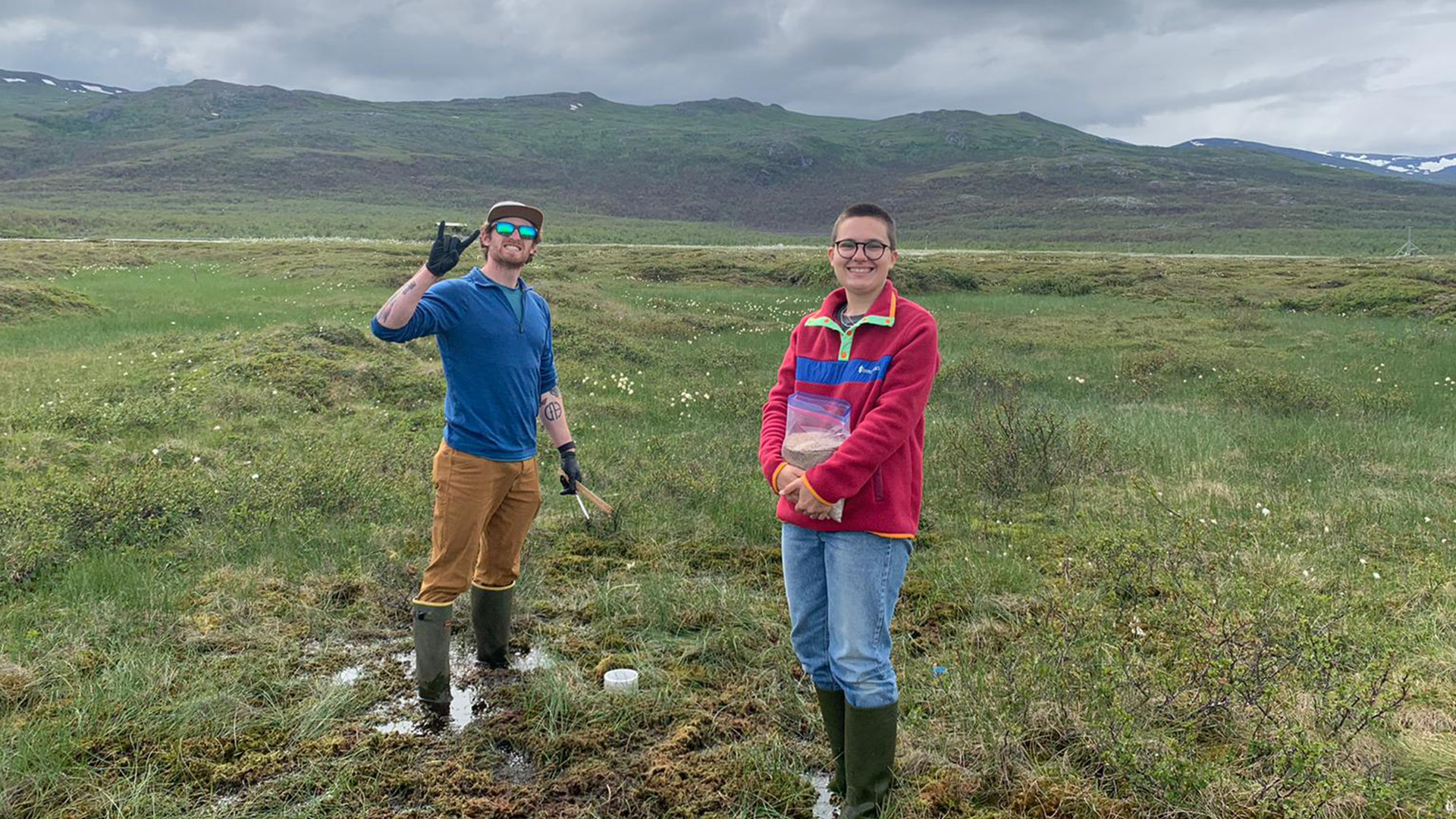
2 minute read
Where Permafrost Thaws Researchers and Students Are Working to Understand Risks
COLSA has no shortage of students who are passionate about protecting the environment, and environmental science: ecosystems major Torin Scalora-Riley ’25 (above left) is one of them. During his time at UNH, Scalora-Riley has found his own way to make a difference by undertaking an undergraduate research project through the National Science Foundation-funded EMergent Ecosystem Responses to ChanGE (EMERGE) Biology Integration Institute.
The research took Scalora-Riley all the way to Sweden, where he measured the methane emission rates of permafrost soil in various stages of thaw. Permafrost, which serves as a major carbon store for the planet, is being compromised by rising global temperatures. His research aims to gain a better understanding of how much methane — a harmful greenhouse gas — will be added to the atmosphere because of thawing permafrost. This work is conducted in close collaboration with research scientist Hannah Holland-Moritz and nested within a larger research project led by Jessica Ernakovich, associate professor in the department of natural resources and the environment, to analyze how microbes behave as permafrost thaws.
Data about climate feedback loops such as this supplies critical information for scientists and policymakers looking to confront threats posed by climate change. “It’s a very real possibility that we could see unprecedented permafrost thaw this summer, and that can mean a lot more methane, which is much more powerful than CO₂,” Scalora-Riley explains. Gathering more information now can help our communities better anticipate what is to come.
If there’s one thing this experience has clarified for Scalora-Riley, it’s that he loves to be “out in the field doing science.” He adds, “I never realized what you could do as an undergrad. It’s really opened my eyes to what’s possible as you’re beginning your scientific career.”
Scalora-Riley’s current career aspirations include more research and opportunities for greater engagement in environmental science communications and advocacy. He expresses certainty that, wherever he lands, this research experience “is serving as a launchpad for where I want to end up in the workforce.”










